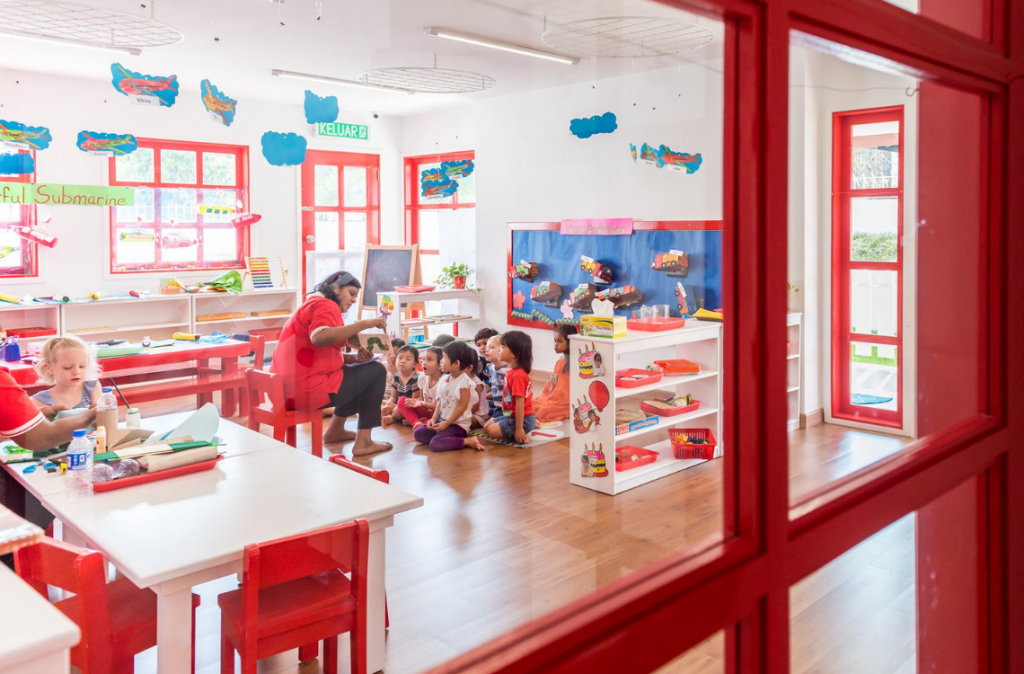Montessori is an attitude, not simply a teaching system, not just a technique. One must have great love and understanding of each individual child. Montessori is a spiritual attitude towards mankind, and mankind begins with childhood.
Thus was the Montessori philosophy printed on a leaflet that fell in Nan’s hands some 33 years ago and that changed not just the entire course of her life, but also made a positive impact on the early childhood education landscape in Malaysia. But, what is Montessori Education?
In A Nutshell
Malaysian parents are no strangers to the term Montessori; in fact, most of us were a product of Montessori-focused kindergarten and if we didn’t know what it actually was back then, we would know now through the research for a preschool for our own children today.
In simple words, Montessori education is a child-centred educational approach developed by Dr. Maria Montessori which has been used over 100 years in many parts of the world. The core of Montessori learning consists of hands-on learning, collaborative play, and self-directed activities. Children are given the space to self-lead and make creative choices, and they get to explore the world around them either individually or in groups through learning and playing.
Teachers are trained to facilitate the child’s interests and offer age-appropriate activities to guide the process; and in the words of the founder of this popular education system, “The greatest sign of success for a teacher is to be able to say, ‘The children are now working as if I did not exist,’” – which gives a glimpse into a Montessori-trained teacher’s noble role to bring up independent learners.
Going Back In Time
Having learned about the Montessori education by way of a leaflet, Nan Civel, or affectionately known as Aunty Nan, was intrigued by its educational philosophy and methodology; she decisively took the leap and pursued her passion for Early Childhood Education back in 1983. She caught the vision cast by Dr. Maria Montessori and is a firm believer and respecter of the “magical minds of children”. Having completed the study and work program in the Maria Montessori Training Organisation in the UK, Aunty Nan then started the first full-fledged Montessori-based preschool in Malaysia in 1986, aptly named, The children’s house, located at 5 Jalan Batai Barat – an address that holds a treasure chest full of memories for its alumni, teachers who are dearly called “Aunties”, parents, and especially so, its founders.
Why Montessori?
Parents who visit The children’s house will immediately be drawn to the cheery, iconic red and white schoolhouse. The classrooms’ settings are mindfully designed and laid out at children’s eye level with furniture scaled down to a cute child-size. Learning materials are arranged and classified in an orderly way, too, all with the purpose of meeting the children’s needs according to their ages in mind.
Over a century, it was observed that children thrive on routine, tidiness, communal meals, and most importantly, the freedom to move, choose and socialize in a non-competitive, calm, and harmonious environment; and the by-product – responsible, sociable, and highly disciplined children. These observations had set the tone to how a Montessori classroom should be, and they continuously produce positive transformation in children, as witnessed by The children’s house year in, year out.
Dr. Maria Montessori believed that a non-intimidating learning environment will greatly promote deeper understanding of all subjects, such as language, mathematics, science, music, social interactions and much more as observed in her experiments and studies in earlier days. In other word, a child’s perspective is valued and should lead the learning process.
The concept of self-correction was very important to Dr. Montessori when she first designed her teaching materials. This enables children to develop independence and be able to progress at their own learning speed. In The children’s house, the Montessori educational materials encompass 5 curriculum aspects: practical life, number work, language, culture, and sensorial. Here, a child is encouraged to ask questions and seek answers, explore their interests, and are motivated to learn and excel. All these will eventually shape the child’s self-confidence as they grow.
Evolving For The Better
At The children’s house, programs are catered to two age groups: the Montessori Playgroup (2 months – 2.5 years old) and the Montessori Junior (2.6 – 6 years old) – with a focus on preparing the child for the next level; the teacher/children ratio is also carefully designed for optimal learning with activities guided by a respect for the teacher, other children, and for the materials. The Montessori strives to provide a nurturing and harmonious environment which aims to meet a child’s physical, social, emotional, and intellectual developmental needs.
The children’s house is available in 13 locations across Kuala Lumpur and Selangor. Parents are welcomed to make an appointment for a school tour and to find out more about how an established educational method like this can help a child in the long run.
Also, there will be 2 Montessori Workshops coming up in November for the 18 month to 6-year-olds (except for Mont Kiara: 3-6 years old). The 2-hour workshops will be held on:
-
16th November at Batai, Jaya One, Ampang, Ara Damansara
-
23rd November at Mont Kiara, Cyberjaya, TTDI, Bukit Jalil City
And The Legacy Continues
As the world develops and progresses on, it is even more important that parents raise well-rounded, stable, and dynamic children, and what better way than to look back at the great works of Dr. Maria Montessori to keep our children grounded on evergreen values and ethics?
The children’s house has seen and sent out graduates who are shaking and shaping the world today, making waves of change since it opened its door to Malaysians 36 years ago. As the educationist wisely puts it, “within the child lies the fate of the future”, parents, are you ready to unlock it?
